LESSONS LEARNED FROM GUN WRITING
by John Barsness
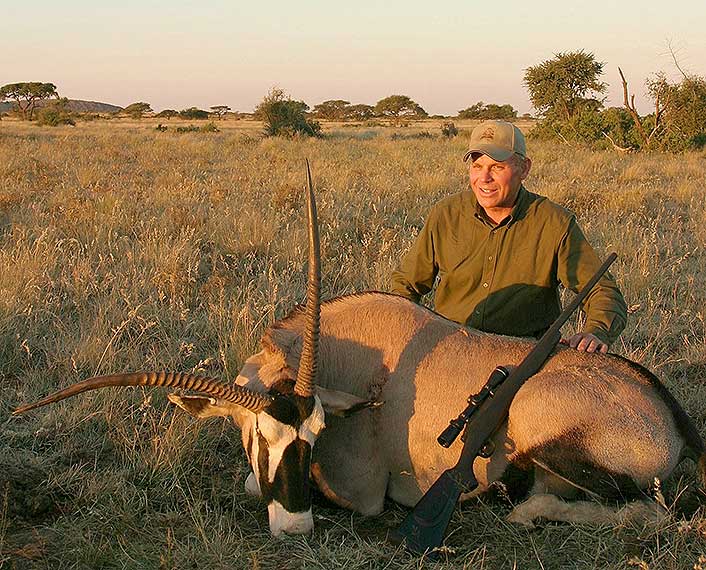
LIKE MANY gun writers I got into the profession during mid-life, after establishing a freelance career writing about other stuff from fly-fishing to Western history. It wasn’t until around age 40 that gun writing started turning into more of my income, partly because before my mid-30s I couldn’t afford to satisfy my apparently infinite desire for sporting firearms. After starting to buy and use more rifles and shotguns, I also started learning how little knowledge had been acquired when sticking to basic hunting tools.
During the low point in my early “collecting” of hunting guns, my already modest array was divorce-trimmed to a Remington 870 12-gauge magnum, Marlin Model 81 .22 rimfire, and a Ruger 77 .30-06. That’s still a good combination for hunting edible game in North America, but eventually I also wanted a real centerfire varmint rifle, rather than getting by with “dual purpose” cartridges such as the .243 Winchester, along with a wider variety of shotguns and, especially, more big game rifles.
Among the first additions were a Remington 700 in .223 Remington, and a pretty fancy AyA XXV side-by-side 12-gauge. These started teaching new lessons, ranging from more accurate handloading techniques to the fact that a “nice” shotgun doesn’t necessarily shoot better than a plain one — especially if its balance doesn’t particularly match its owner.
Eventually I acquired enough experience with various guns to start publishing more articles in gun magazines. Among the first were Rifle and Handloader, which appear six times a year in alternating months. After selling a few pieces to then-editor Dave Scovill, I was astonished one day when he called and asked what I “planned” to write that month. Until then there was no hint that I was expected to write for every issue, but nothing brightens a freelance writer’s life like steady money. I quickly came up with a suitable idea, and almost as quickly mailed off the finished article.
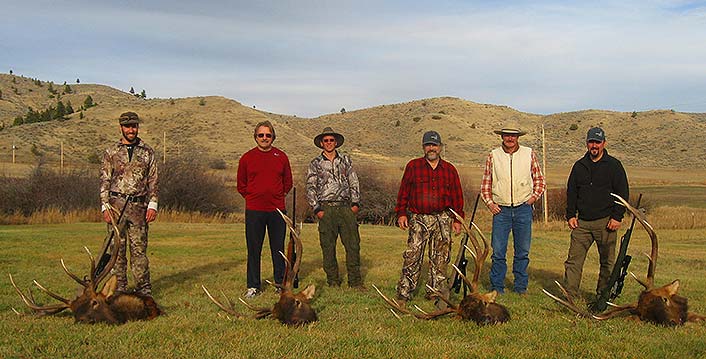
Around that time I started getting invited on free or discounted hunts in various places, whether by booking agents, outfitters or manufacturers. These helped me gain even more knowledge both about gear and various animals, though after hunting in Montana for the first 35 years of my life, at first there weren’t many surprises. My native state contains a bunch of different big game animals and upland birds, and the waterfowling ain’t bad either. The terrain also includes high mountains and lowland plains — which itself varies considerably from sagebrush desert to what’s essentially Midwestern farm country, with thick deciduous forest along the rivers.
The hunting started to become more intriguing when the trips started expanding beyond the 48 contiguous United States, to northern North America and southern Africa, Europe, South America and islands like New Zealand. But even those trips didn’t astonish me as much as some other gun writers encountered along the way, who apparently had decided long ago that they knew everything, and not just about hunting rifles. One complained in more than one foreign country that he couldn’t find “a decent cheeseburger and fries.”
One of my earliest travel hunts took place in Colorado, which if you mentally subtract about five million people isn’t much different from Montana. It was a basic deer hunt on the eastern plains, for either a whitetail or mule deer buck. This was familiar to me in just about every way, but I’ve also always found that even familiar hunting teaches us new lessons every year. One supposed reason for the hunt was “field testing” a new premium bullet, and since a dozen hunters were involved plenty of new information went into my data bank.
I took my buck — a pretty good 5×5 whitetail — relatively early in the hunt, then immediately started going along with other hunters, partly to gain experience and partly because I like being outdoors in October. However, as other hunters took deer it became obvious some considered the hunting as something to get done quickly, so they could do something else indoors. One even arranged to fly home as soon as he got his deer.
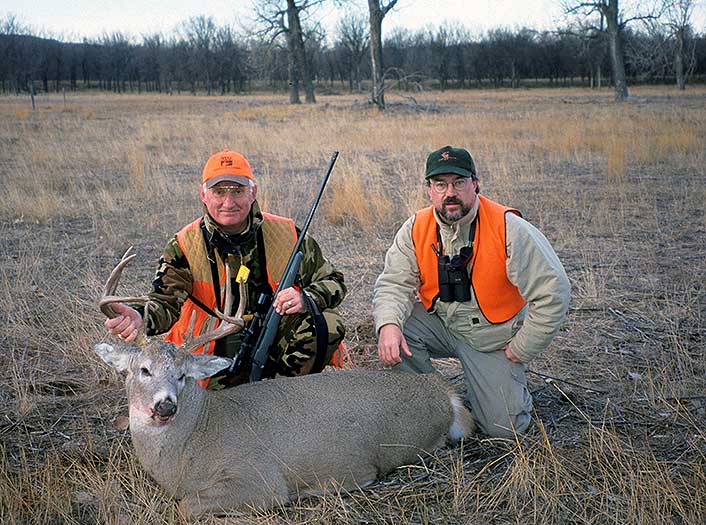
I ended up accompanying four other hunters. One buck was a mule deer, one a muley/whitetail hybrid (confirmed by one of the writers, also a professional wildlife biologist), and two were whitetails. The last was the biggest whitetail taken during the hunt, and also happened to be what we often call in Montana a “prairie buck.” Instead of finding it along one of the brush-bordered creeks and rivers, we were supposedly glassing for mule deer, and instead found the whitetail bedded the top of a grassy ridge where the tallest “cover” was knee-high sagebrush and yucca.
This astonished some of the other hunters, all from east of the Mississippi River, even though the outfitter had given a short talk the night we gathered at our motel, explaining whitetail bucks could be found far from anything many hunters consider appropriate cover. In fact, he’d specifically advised them to keep their minds open when his guides spent time glassing open country.
Despite this, one of the Easterners had insisted on sitting in a tree stand for the first two days of the hunt, in the only sizeable cottonwood tree along one of the sparsely wooded creeks. He “knew” that’s where whitetail bucks would live, but never saw one.
I also got to see how the new bullets worked, in three different cartridges. We’d all been issued the same model of Browning A-Bolt, but I drew a 7mm Remington Magnum and the guys I accompanied used .270s and .30-06s. The bullets were Winchester Fail Safes, before they turned into Combined Technology Fail Safes, which worked very much like the several monometal “petal” bullets made by various companies today. The front half was a hollow-pointed copper alloy, and the rear end had a lead core, protected from deformation by a steel cup.
While the Fail Safes killed deer, with lung shots they did not usually drop them as quickly as more conventional softnose bullets. My buck, for example, was shot while I sneaked slowly through timber during a moderate blizzard, along the one real riverbottom in the area. The snow softened the sound of my feet, and limited visibility, both helping me get within offhand range of the bedded buck before he stood up broadside. The bullet landed just behind the shoulder, and he immediately ran into a cattail thicket along the frozen river — in the process jumping a bedded coyote, which ran out the opposite side of the cattails. For a nanosecond I though the coyote was the deer, but the buck had died inside the thicket, around 75 yards from where it had been hit. The Fail Safe exited, of course, so also left a decent blood trail, which with the fresh snow made the buck easy to find. (To illustrate how unpredictable plains deer can be, after the outfitter and I dragged my whitetail to his vehicle and starting driving back toward the highway, we ran into a very big mule deer buck in the same stretch of riverbottom timber, rather than out in the wide-open spaces where he “should” have been.)
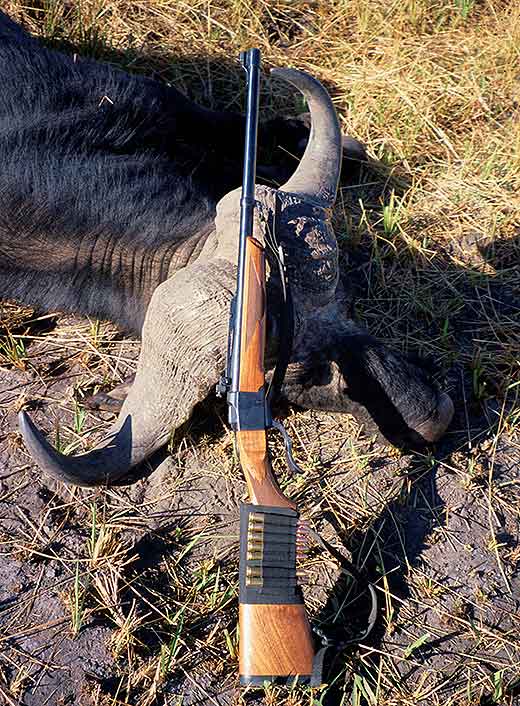
After that I took quite a few animals with Fail Safes in both North America and Africa, including a big Alaskan moose and Botswana Cape buffalo. They worked particularly well on such really big game, and in my experience were the most consistently accurate of the deep-penetrating, petal-expanding bullets during the 1990s. But after Barnes put circumferential grooves around their X-Bullet in 2004, naming the result the Triple-Shock, the more complex and expensive Fail Safe could not compete.
The last industry hunt I attended where Fail Safes were used was on the King Ranch in Texas, where 15 hunters took 30 nilgai, a bull and cow each, along with several feral pigs. The main point of the hunt was the brand-new .270 WSM, and all the factory ammo was loaded with 140-grain Fail Safes.
In that instance the people who thought they already knew everything about nilgai hunting were not only a couple of writers but the guides, whose outfitter boss normally demanded nothing less than a .300 Winchester Magnum on nilgai hunts. The mere mention of the numeral .270 made him wince.
By the end of the hunt most of the doubters changed their minds, since the “little” Fail Safes worked great on nilgai, including several big bulls, generally considered very hard to kill. However, a couple of people remained skeptical despite all the evidence, because they’d decided long ago that any sub-.30 caliber cartridge was inadequate for game much larger than deer.
I have seen the same sort of thing happen on enough other hunts to expect some doubt despite the results of the field testing, whether from people who’d already made up their minds, or did not shoot very well. On a pronghorn hunt in Wyoming, one writer insisted the bullets in the factory 7mm-08 Remington ammunition he used were not expanding and hence “penciling through.” He came to this conclusion after shooting a buck several times before it fell.
That evening that writer left the usual post-hunt social session early, apparently exhausted by his ordeal with the defective bullets. His guide then told us the guy had shot the buck around the edges of the vitals, and the exit holes indicated the bullets expanded normally. (If you’re curious, they were 139-grain Hornady Interlock Spire Points, which I’ve never had any trouble with in 30 years of use on game from pronghorn to caribou, in cartridges from the 7mm-08 to 7mm Remington Magnum.)
The point of all this is keeping an open mind — which I try to do, especially when confronted with “evidence” from gun writers who made up their mind about everything long ago. An old example would be Elmer Keith. Now, I love to read Keith’s writing (the reason for owning all his books), partly because he was very good at telling hunting tales, and partly because I liked his lifestyle — to the point where I now live within a few miles of where his family ranched in Montana.
But it’s also apparent that Elmer made up his mind about big game cartridges even before he started writing about firearms. He did modify his ideas slightly over the years, such as when he switched from the .35 Whelen to his similar wildcat .333 OKH, because of the .333’s higher sectional density and ballistic coefficient. But he apparently never grasped the advantages of “premium” bullets, because he’d grown up with cast bullets and cup-and-cores, so continued to use and recommend larger caliber cartridges long after better bullets allowed smaller-caliber cartridges to match or even exceed their performance.
This prejudice due to early experience isn’t uncommon among humans. Since around the middle of the 20th century, more advances in hunting rifles and their accessories have occurred than in the similar length of time after practical smokeless powders appeared in the 1880s. Yet many of us — especially hunters of my generation — still cling to what we learned in our youth.
This is understandable, because experiences when young tend to leave larger impressions, the reason when many older hunters ask about the “best” rifle scopes, they’re asking about optical quality, though even most of today’s relatively inexpensive scopes have finer optics than the scopes older hunters grew up with. Instead the emphasis in 21st-century scopes has turned to reliable mechanics, something the scopes we grew up using often lacked.
Similarly, some of us retain the same notions about rifles, cartridges and bullets we learned in our 20s and 30s, often partly from our fathers and grandfathers. For that matter, many even retain the same notions about vehicles. One of my best local buddies (I’ve known him since we were in our 30s) has always purchased the same brand of pickup truck favored by his late father. These were pretty reliable, if unexciting, pickups when we were growing up, but the brand then went through a period of being not very good. My buddy still bought ‘em, and occasionally even complained about getting a “lemon,” but refused to consider any other brand. Luckily, eventually the family brand got better again.
Some other gun writers regard the generous opportunities of the profession as something like a college graduate finally entering the “real” world, and starting to apply early training while learning on the job. This often results in a wider array of solutions to specific problems. All of this is why I try to retain an open mind, even though (like other hunters) I have my own prejudices about rifles, cartridge, bullets, scopes etc.
One of the biggest lessons learned early in my hunting career came from Dave Scovill, who had recently rejected an article by another writer, about how the .308 Winchester is the greatest general-use big game cartridge in America. I happen to somewhat agree — but the guy almost never hunted with any other cartridge. As a result the article lacked perspective. Instead it consisted of hunts where he’d killed big game with the .308 (something possible with a great many rounds), so was not very interesting, breaking one cardinal rule of any magazine writing.
All of which is why I try not to pre-judge, thanks to having the opportunity not only to do a lot of shooting and hunting myself, along even more observation of other shooters and hunters. When some reader contacts me, asking what’s the best big game bullet out of several he’s considering, I usually do not answer with a certain recommendation, but instead describe how each one works, based on my experience. He can then use this information (if he wants) to help make up his mind.
This why my primary prairie dog round is now the .17 Hornady Hornet, rather than the .223 Remington I, and just about everybody else, used 30 years ago. The .17 with plastic-tipped bullets works just as well out to around 300 yards, where 90% of prairie dogs are shot, with less expense, and recoil so light you can watch bullets land (whether hits or misses) through a high-magnification scope. It’s also why the .223 Remington is mostly used these days for ranges beyond 300 yards — with a 1-8 twist barrel and plastic-tipped bullets weighing at least 75 grains.
It’s also why an ancient German cartridge named the 9.3×62 pretty much replaced the .338 Winchester and .375 H&H Magnums for my “medium bore” hunting almost 20 years ago. I discovered (thanks to an even older gun writer who also kept an open mind) that modern bullets and powders allowed the 9.3×62 to match the field performance of the .338 and .375 when using 250-300 grain bullets — but with five rounds in the typical bolt-action magazine, instead of three, and less recoil.
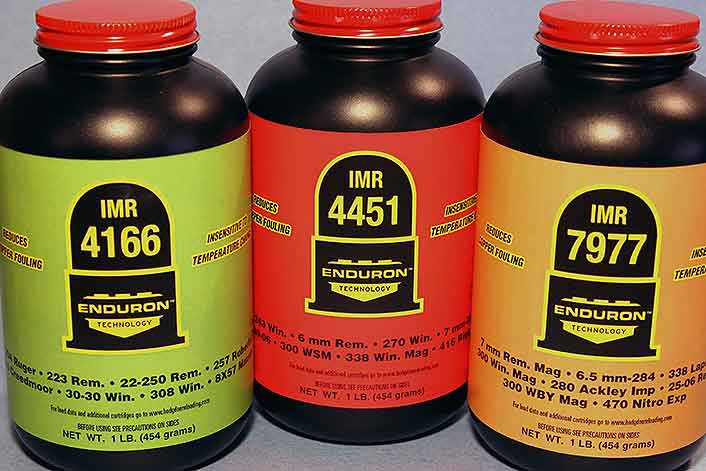
Because many of today’s bullets and powders didn’t exist before I started writing about guns, I’ve had to try them, not just once but a number of times, to gain that knowledge of both tiny varmint rounds and Keithian cartridges. It’s also why I continue to try other new stuff, even if some of it runs against my preconceived notions, because I believe (perhaps somewhat naively) that gun writing should be objective journalism.
The late, great gun writer John Wootters once told me it was not, because he’d done “real” journalism for a big Texas newspaper. Instead he insisted gun writing was entertainment. To a certain extent I agree, because any commercial writing should be entertaining on some level. But non-fiction should also contain new information, which is impossible when writers have already made up their minds before trying something new.
John’s new book Modern Hunting Optics and other great stuff can be ordered online at www.riflesandrecipes.com.
Stay Connected
- Got a Break in the Montana Missouri Breaks
- It Took Six Days but We Finally Slipped One Past the Bears and Wolves
- No Mule Deer This Fall – Whitetail TOAD!
- An Accounting of Four Idaho Bulls (Elk)
- Arizona Deer Hunt 2019: Good Times with Great Guys
- Caught a Hornady 143 ELDX Last Night
- Cookie’s 2019 Mule Deer Photo Run
- Let’s See Some Really Big Deer
- Alaskan Moose Hunt Success!
- Take a Mauser Hunting: An Important Message From The Mauser Rescue Society!
- Welcome 16 Gauge Reloaders! Check In Here.
- Off-Hand Rifle Shooting – EXPERT Advice
- BOWHUNTING: A Wide One!

